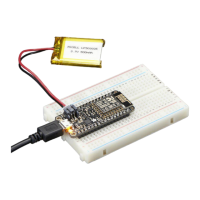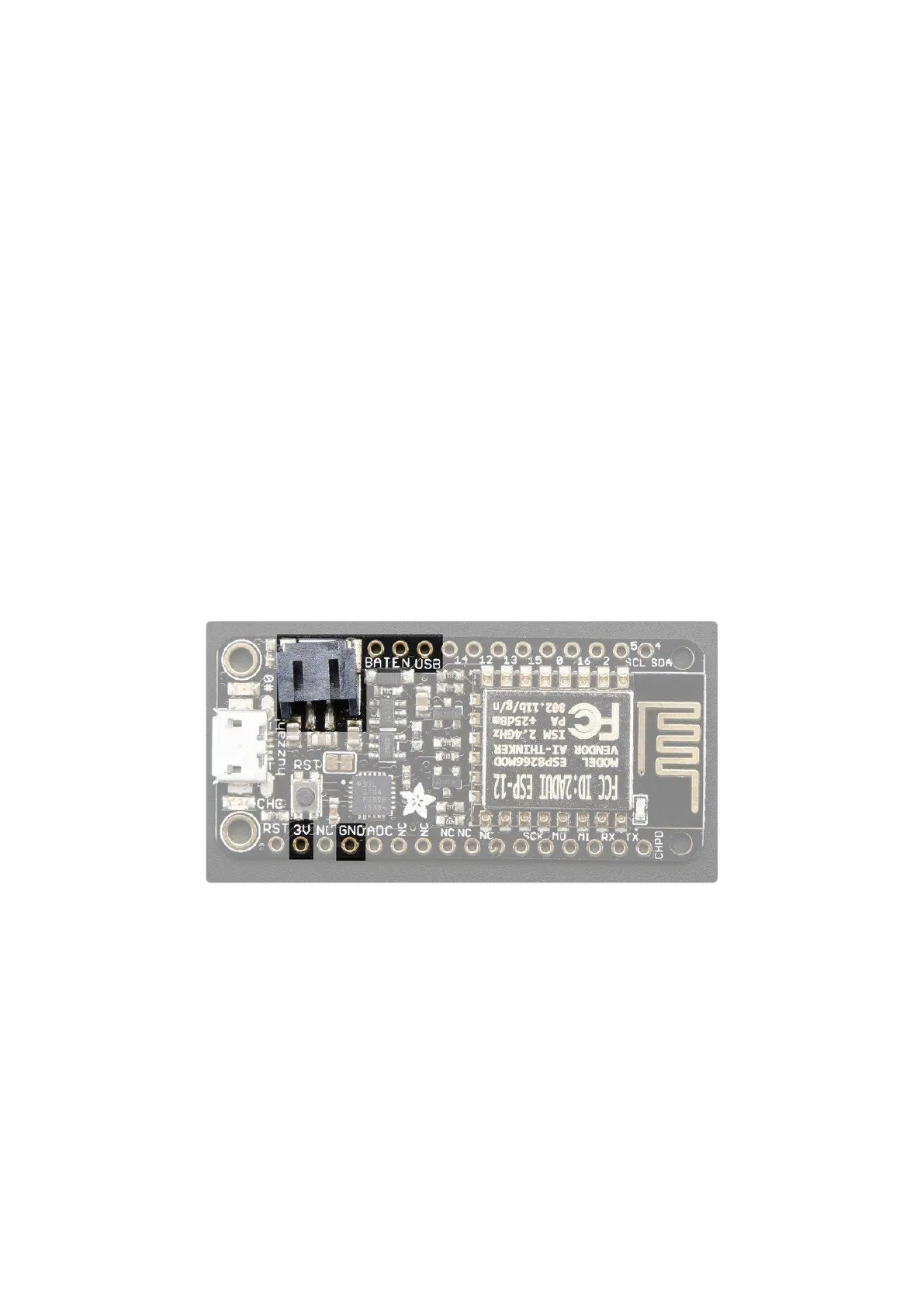The above shows the Micro USB jack (left), Lipoly JST jack (top left), as well as the
3.3V regulator and changeover diode (just to the right of the JST jack) and the Lipoly
charging circuitry (right below the regulator).
There's also a CHG LED next to the USB jack, which will light up while the battery is
charging. This LED might also flicker if the battery is not connected.
Power supplies
You have a lot of power supply options here! We bring out the BAT pin, which is tied
to the lipoly JST connector, as well as USB which is the +5V from USB if connected.
We also have the 3V pin which has the output from the 3.3V regulator. We use a
500mA peak low-dropout regulator. While you can get 500mA from it, you can't do it
continuously from 5V as it will overheat the regulator. We use this to power the
ESP8266 which can draw spikes of 250+mA (although its not continuous).
You should be able to budget about 250mA current available from the regulator,
which will leave plenty for the WiFi module.
Measuring Battery
If you're running off of a battery, chances are you wanna know what the voltage is at!
That way you can tell when the battery needs recharging. Lipoly batteries are 'maxed
out' at 4.2V and stick around 3.7V for much of the battery life, then slowly sink down
to 3.2V or so before the protection circuitry cuts it off. By measuring the voltage you
can quickly tell when you're heading below 3.7V
Since the ESP8266 does not have multiple ADC pins, we didn't want to 'sacrifice' one
for Lipoly battery monitoring. However we do have a tutorial that mentions how to do
©Adafruit Industries Page 24 of 53

